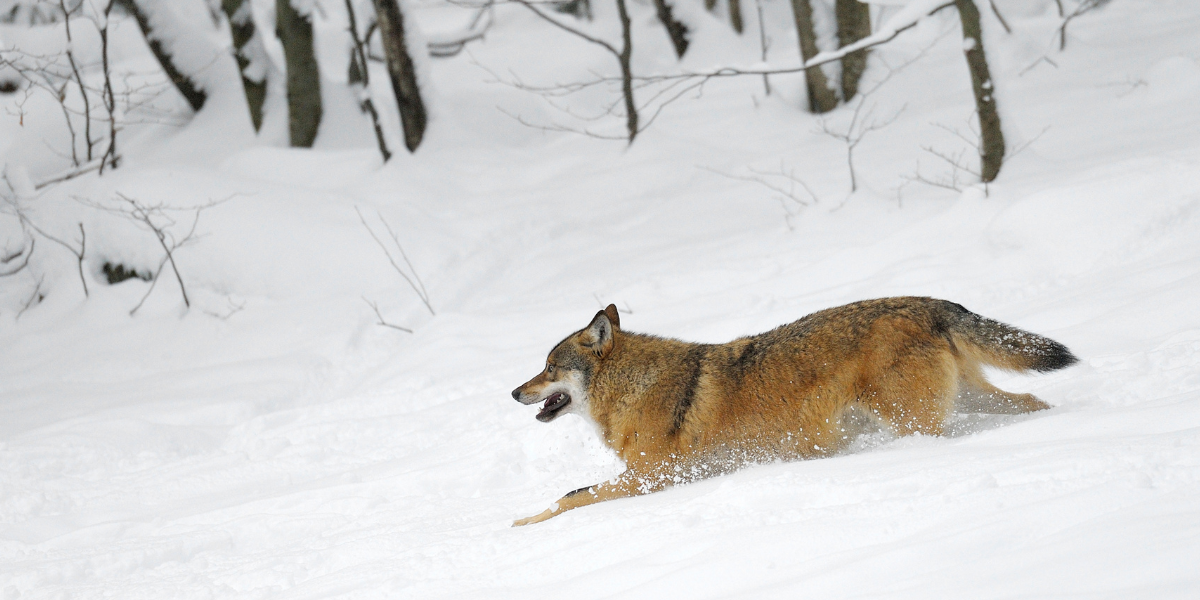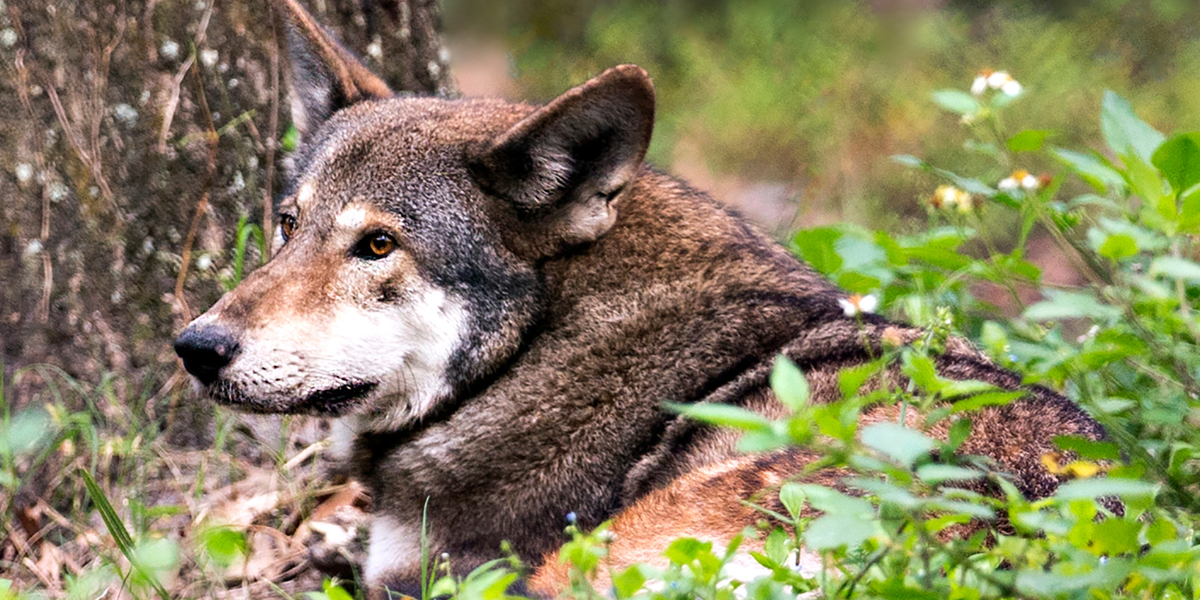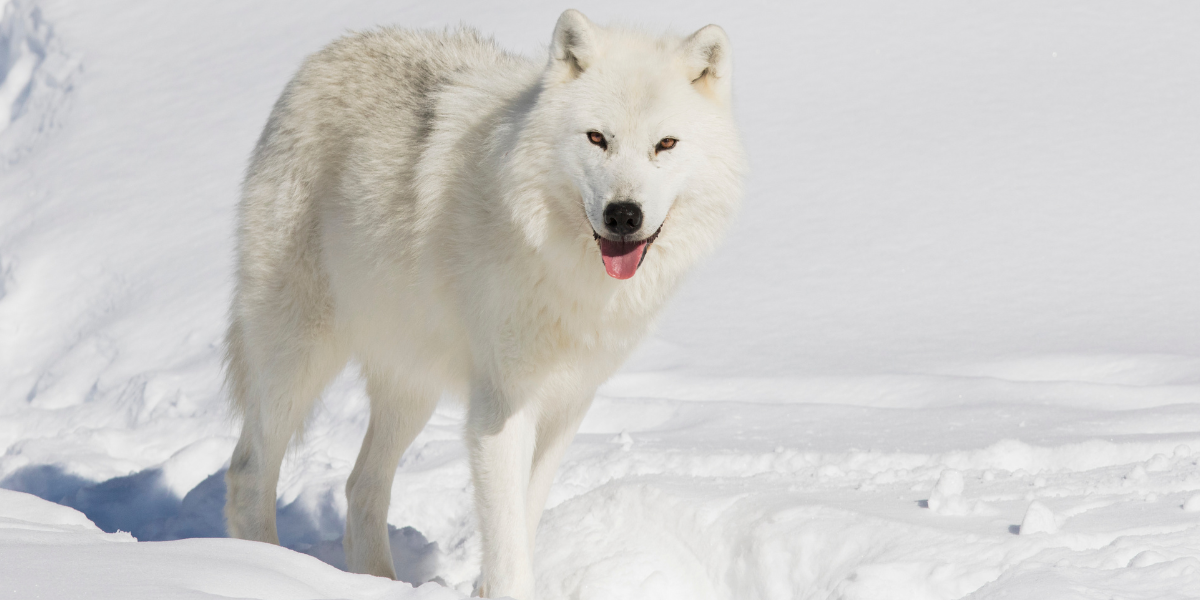How fast can a Wolf Run – (Types of Wolves & their Speed)
Wolves are known for their incredible speed, but just how fast can they really run? This question intrigues many who admire these majestic predators of the wild. Understanding a wolf’s speed helps us appreciate their hunting skills and survival strategies.
In this article, we dive into the fascinating world of wolves, exploring their speed across different subspecies. We’ll uncover the factors that influence how fast they can move and compare their speeds under various conditions.
Whether you’re a wildlife enthusiast or simply curious, this exploration promises to enlighten you about these remarkable animals.
How Are Fast Gray Wolves?

A gray wolf, traveling at top speed, can cover up to 40 miles per hour for short distances, according to the international wolf center. This is their full speed, which they use to catch their prey,that moves faster like deer, hare, antelope, and moose.
These top predators are known for their strength, stamina, and hunting skills, making them one of the most frightening predators of the animal kingdom.
However, despite their impressive speed, gray wolves are also known for their intelligence, often working together in packs to outmanoeuvre their prey and increase their chances of successful hunting.
Particularly, young wolves can travel hundreds of miles from home searching for new territory or a mate.
Gray wolf subspecies And their Speed
The speed of the wolves varies depending on their subspecies. Some of the wolf’s subspecies are given below with their speed.
Red Wolves and its Speed
The Red Wolf, also known as Canis rufus, is a rare subspecies of wolf found primarily in the southeastern United States. These wolves are known for their incredible speed and agility, allowing them to navigate dense forest habitats swiftly.

With a top speed of up to 35 miles per hour, the Red Wolf can easily outrun its prey, including deer and smaller mammals.
However, due to habitat loss and human interference, the Red Wolf is considered one of the most endangered canids in the world, with only 20-30 red wolves remaining in the wild.
Arctic Wolf and its Speed
The Arctic wolf, also known as the white wolf or polar wolf, is a subspecies of the gray wolf that lives in the Arctic regions of North America and Greenland.
The arctic wolf blends into their surroundings with thick white fur and keeps their body warm in extreme minus temperatures.

In addition to their impressive camouflage, Arctic wolves are incredibly fast runners, capable of reaching up to 46 miles per hour when chasing down prey or fleeing predators.
Their speed and agility make them formidable hunters, allowing them to catch even the swiftest prey, such as caribou and muskoxen.
How Fast Do Wolves Run When Traveling?
Wolves are known for their impressive speed and agility. When travelling, wolves typically run at a pace of 5-8 miles per hour, covering up to 30 miles in a single day.
However, when hunting, they can reach up to 40 miles per hour for short bursts, allowing them to catch prey quickly.
Their powerful legs and large paws act as natural shock absorbers, allowing them to navigate rough terrain and help in rapidly change in direction.
Can a human outrun a wolf?
Humans can not outrun a wolf as the wolves are incredibly fast runners, capable of reaching up to 40 miles per hour. In comparison, the fastest human on record, Usain Bolt, only reached a top speed of 100-meter time of 9.58 seconds.
Additionally, wolves are highly efficient long-distance runners and can maintain their pace for hours.
Are Grey wolves stronger than Lions?
While lions are known for their powerful appearance and incredible strength, grey wolves have developed remarkable physical endurance and exceptional packs.
Grey wolves are some of the most efficient and effective pack hunters in the wild. But the lion is the king of the jungle and is comparatively stronger and larger than a wolf.
What animal can outrun a wolf?
When it comes to running, wolves can reach speeds of up to 40 to 46 miles per hour, making them one of the fastest land animals in the world. However, a few animals can outrun a wolf in a sprint.
The first is the cheetah, which can reach up to 75 miles per hour, more than twice as fast as a wolf. And the second is the antelope, which can run up to 60 miles per hour, and the greyhound can also outrun a wolf.
Conclusion
The speed of these top predatory animals differs based on their subspecies, age, and size. Like an arctic wolf can cover 46 mph. On the other hand, a grey wolf can run for 30 to 40 miles per hour for short distances.
From their powerful legs and agile bodies to their keen sense of smell and sight, wolves are remarkable animals. But, they can not maintain their fast pace for longer distances. You can check more about the wolf’s speed in the video below.Adult wolves, comprising various species like Canis lupus, exhibit diverse hunting behaviors and howling communication within a pack. These canines, including Mexican, Arabian, and Indian wolves, face conservation concerns. Packs, led by a dominant pair, pursue prey like elk or bison. They inhabit vast areas in northern regions, vocalize extensively, and contribute to the ecosystem by controlling prey populations.Efforts under the Endangered Species Act aid wolf conservation, aiming to preserve these iconic, medium-sized wild animals. Understanding wolf behavior, population density, and the dynamics of their distinct species remains pivotal for wildlife preservation.
Frequently Asked Questions
How long can a wolf run without any break?
wolves can run at high speeds of 30-40 miles per hour, but they can only maintain that pace for short bursts of a few minutes.
How many wild wolves are in the United States?
Red Wolf, Mexican Gray Wolf, Eastern Wolf Eastern Coyote Wolf are the subspecies of the grey wolf found in the united states.
How Far Can Wolves Run in a Day?
Wolves can cover impressive distances in a single day, often traveling up to 30 miles, especially when hunting or patrolling their territory.
Which is Faster, a Wolf or a Lion?
A lion is faster than a wolf. Lions have the ability to reach speeds of up to 50 mph, while wolves have a maximum speed of around 37 mph. Therefore, in a direct comparison of speed, a lion would outpace a wolf.
What is the Fastest Wolf in the World?
How Far Can Wolves Run Without Stopping?
Wolves can run 30 to 40 miles per hour for short bursts and run slower for much longer periods.
- What Should I Do If A Koala Bites Me? Safety Guide - 2024-05-30
- Are Kangaroos Born Without Hind Legs? A Fascinating Journey - 2024-05-30
- Animals That Look Like Squirrels - 2024-05-30









